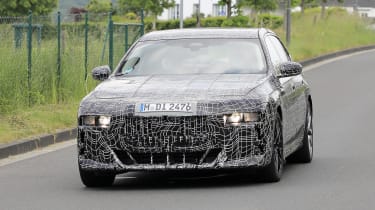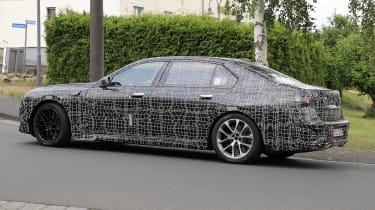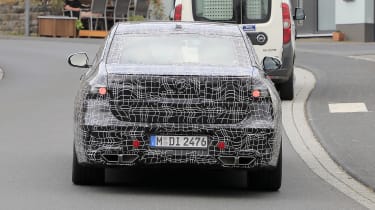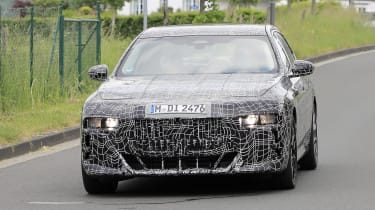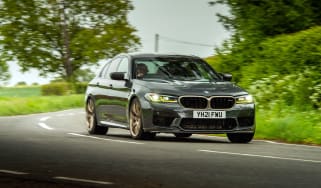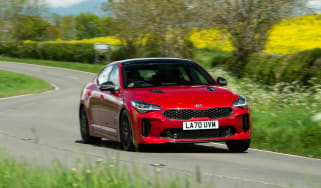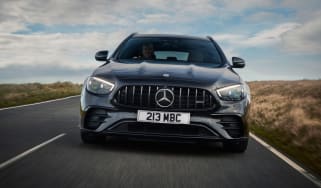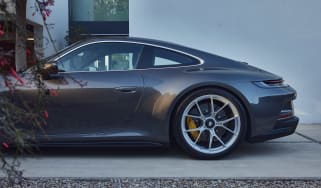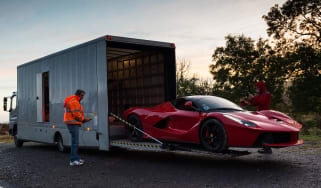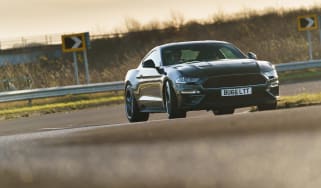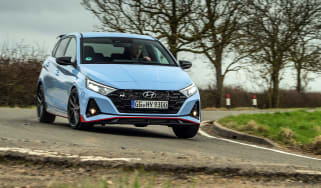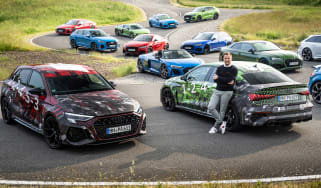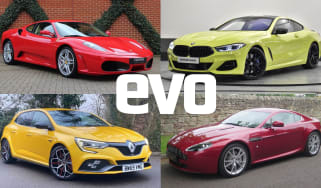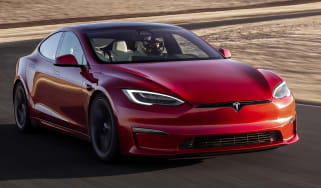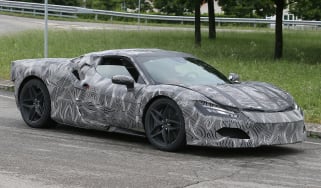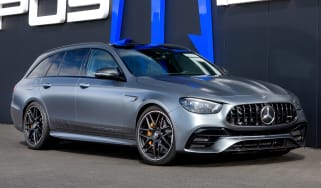Next generation BMW 7-series spied – flagship saloon to once again set the tone for future models
All-new saloon to feature IC and EV powertrains, but once again it’ll also lead the way aesthetically
New images have arisen of the next generation BMW 7-series in an early body-on prototype phase undergoing testing before its debut next year. BMW certainly hasn’t been afraid to push a few buttons when it comes to design in recent years, challenging its traditional customer base with sports models like the new M3 and M4, and it looks like this new 7-series will be no different.
But BMW’s penchant for controversy started well before the current M3, and it did so with the most traditional of model lines when the E65 7-series arrived in 2001, signalling the beginning of what’s colloquially known as the ‘Bangle era’ – after its then-chief of design Chris Bangle. So with our first peek at the new generation model due next year, it’s looking like BMW will once again make the 7-series play the protagonist.
These spy images are our best look yet at the new luxury saloon, and while it is still an early prototype lacking many production elements such as lighting, there’s still plenty to unpack. To start, the kidney grille looks to yet again be a focal point, taking up a vast majority of the real estate at the front end. It might look to only reside underneath the beltline thanks to its cladding, but will almost certainly rise above and intersect the bonnet, much in the same way as the current 7’s does.
What will change is the headlight placement, which looks to sit lower down the front bumper within a heavily stylised front graphic that also incorporates the lower air intakes. The version in these pictures is most likely an M Sport derivative, featuring unmistakable oblong sections on either side of the central intake – a common design trait of many modern M Sport models.
What’s not known from these images is whether the lower lights will be the only lighting elements, or if it’ll utilise a split headlight design as is expected on the facelifted X7, which is getting a substantial overhaul of its own to remain aligned to this new 7-series.
From here, the design deviates however, keeping hold of a resolutely upright three-box shape that channels the E38 7-series that was in production between 1994-2001, rather than the more homogeneous models that followed. We can also see that the new 7-series will adopt the split brightwork quirk of the current 3-series, which visually stretches the side windows, finishing with an upright and boxy tail. The rear plate’s movement to the lower bumper suggests a cleaner rear design, and we expect the lighting around the back to emulate the iX SUV with slim horizontal units.
Under the skin, the changes are likely to be less significant, with the new model expected to run on a modified version of the CLAR architecture that currently underpins most of BMW’s saloon car range. The basics will be familiar: rear- or all-wheel drive, a range of six and eight-cylinder combustion engines, plus an ever-expanding range of plug-in hybrid options. As mentioned above, this generation 7-series will also spawn an all-electric version called the i7 in a similar fashion to the 4-series Gran Coupe and i4 model structure. This deviates from Mercedes Benz’s strategy of introducing a totally distinct electric model line as it has with S-class and EQS, with the two powertrains working in the one highly variable platform.
While it’s very unlikely a V12-powered M Performance model will return, BMW is developing a high performance plug-in hybrid V8 powertrain that will be introduced in future flagship SUV models like the X8. Packaging constraints aside, the tiny market for high performance luxury saloons might well be the thing that keeps BMW from expanding the model range in that direction, but AMG versions of the new S-class and EQS will likely spark some level of rivalry, so we wouldn’t totally discount its future existence.
The new 7’s interior is also expected to be a big step forward, having typically informed new generation design and technology that trickle down to other model lines. Whether it goes as far as the new iX’s extremely minimalist and material-focused approach is unknown, but we look forward to seeing where BMW has decided to go when we do eventually see it arrive.
Like the E65 did back in 2001, this 7-series won’t just act as a flagship saloon for BMW, but also a looking glass into BMW’s other models moving forward. So while it might be easy to pass off large luxury saloons like this as little more than a heritage flagship for a heritage brand, it still represents a hugely important step change for one of the industry’s biggest players.

